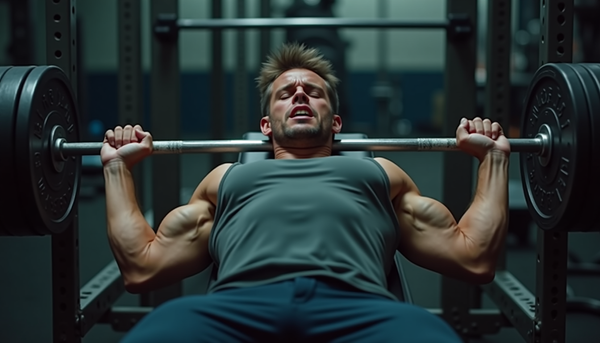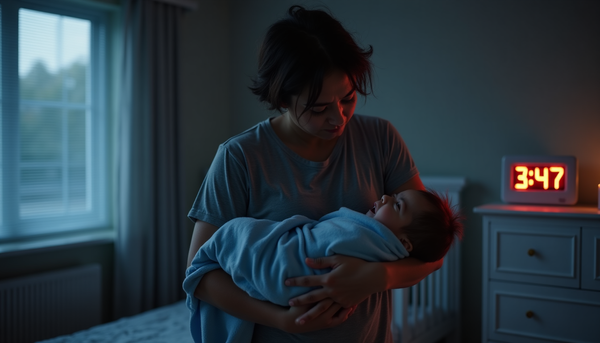Why Your Hockey Training is Probably Wrong

Here's something that'll piss off half the hockey coaches reading this: 90% of hockey players are training completely wrong.
Yeah, I said it. And before you slam your protein shake down and start typing angry comments, hear me out.
I spent four years getting my ass kicked on college ice, thinking that more squats and longer cardio sessions would make me faster, stronger, better. Spoiler alert: they didn't. I was training like a bodybuilder trying to play hockey, not like a hockey player trying to dominate ice.
Then I stumbled across guys like Yunus Barisik—and everything clicked.
The Ice Hockey Paradox Nobody Talks About
Here's the thing about hockey that most strength coaches completely whiff on: we're not just athletes. We're three-dimensional combat specialists operating on a frictionless surface while wielding weapons and wearing armor.
Think about that for a second. Name another sport where you need to:
- Generate explosive power while balanced on 3mm steel blades
- Absorb and deliver contact from multiple angles
- Transition from forward to backward movement in milliseconds
- Maintain hand-eye coordination while your body's getting ragdolled
Basketball players don't train like football players. Swimmers don't train like runners. So why the hell are hockey players still doing generic "athlete" workouts?
This is where Barisik's approach gets interesting.
What 500+ Elite Athletes Taught Yunus About Real Hockey Strength
When someone's trained NHL draft picks from ten different teams and coached ten gold medalists at world championships, you listen. Barisik's track record isn't just impressive—it's a masterclass in understanding what hockey bodies actually need.
But here's what caught my attention: he doesn't just talk about getting stronger. He talks about getting hockey strong. There's a massive difference.
Hockey strong means your glutes fire faster than your morning coffee kicks in. It means your core can stabilize against a 200-pound defenseman trying to separate your soul from your body. It means your posterior chain can load and explode while you're bent over, stick-handling through traffic.
Most training programs build strength in perfect conditions—stable ground, controlled movements, predictable resistance. Hockey happens in chaos.
The Missing Link: Ice-Specific Neural Adaptation
Here's where most coaches lose the plot entirely. They think hockey training is about building bigger muscles. Wrong.
It's about rewiring your nervous system to function at light speed while everything around you is trying to knock you off balance.
Barisik gets this. His year-round periodization isn't just about when to load and when to peak—it's about training your brain and body to communicate faster than the game demands. Because in hockey, the difference between making a play and eating boards isn't muscle size. It's neural efficiency.
Think about the last time you watched Connor McDavid torch someone one-on-one. You think that's just about leg strength? That's tens of thousands of hours of neural pathways firing in perfect sequence, making micro-adjustments that most players can't even perceive, let alone execute.
That's what proper hockey training builds.
The Three Pillars Most Programs Ignore
After diving deep into Barisik's methodology and cross-referencing with my own experiences training hockey athletes, three critical elements keep emerging that most programs completely ignore:
1. Rotational Power Under Chaos
Hockey isn't played in the sagittal plane. You're constantly rotating, pivoting, changing directions while generating and absorbing force. Yet most training programs are obsessed with squats and deadlifts—straight up and down movements.
Where's the rotational power development? Where are the anti-rotation exercises that teach your core to stay solid while everything else is moving?
2. Unilateral Strength That Actually Transfers
Sure, everyone does single-leg work now. But are you doing single-leg work while handling an object? While reacting to visual stimuli? While maintaining sport-specific postures?
Barisik's athletes don't just get strong on one leg—they get strong on one leg while their brain is processing game-like scenarios. That's the difference between gym strong and game strong.
3. Recovery That Builds Resilience
Here's the controversial part: hockey players shouldn't just recover from training. They should recover from the specific stresses hockey creates.
That means understanding how the nervous system responds to quick directional changes. How the fascial system adapts to rotational forces. How the endocrine system handles the unique stress cocktail of high-intensity intervals mixed with contact sport demands.
Most recovery protocols treat hockey players like endurance athletes or strength athletes. Wrong category entirely.
The Reality Check for Different Levels
Now, before you think this only applies to elite players, let me break down the reality for different levels:
Youth Players (12-16): Your job isn't to get jacked. It's to build movement literacy and neural patterns that'll serve you for decades. Focus on moving well before moving heavy. The strength will come.
Junior/College Players (16-22): This is where Barisik's periodization model becomes crucial. You're old enough to handle serious training loads but still developing. The year-round structure isn't optional—it's everything.
Adult Rec Players: Here's some tough love—you can't just show up to beer league twice a week and expect to not get hurt. You need some version of hockey-specific preparation, even if it's 20 minutes twice a week.
The principles scale, but they don't disappear.
What This Means for Your Training
So what's the takeaway here? How do you actually apply this stuff?
First, audit your current program against hockey demands. Are you training movements or muscles? Are you building strength that looks good in the mirror or strength that keeps you upright when some yahoo decides to run you from behind?
Second, think beyond the weight room. Hockey training happens on ice, in the gym, in recovery, in nutrition, in sleep. It's a system, not a workout.
Third, find coaches who understand hockey bodies. Barisik's offering his book for free—that's not marketing, that's education. Read it. Learn from it. Apply it.
The Uncomfortable Truth
Here's something that might sting: if you've been training the same way for years and your on-ice performance has plateaued, the problem isn't your effort. It's your approach.
Hockey keeps evolving. Players are faster, stronger, more skilled than ever. The training methods that worked in 1995 aren't just outdated—they're actively holding you back.
But here's the opportunity: most of your competition is still training wrong. While they're doing generic workouts and hoping for hockey results, you can be building ice-specific dominance.
The gap between good and great in hockey is measured in milliseconds and millimeters. Proper strength training doesn't just make you better—it makes you different.
Your Move
So here's my challenge to you: take an honest look at your training. Are you building hockey strength or gym strength? Are you preparing for the chaos of the game or the comfort of controlled movements?
Because the ice doesn't care how much you squat. It cares how well you can apply that strength when everything's moving, everyone's hitting, and you've got three seconds to make a play that could change the game.
What are you gonna choose—comfort or dominance?
The puck drops in your next training session. Make it count.




